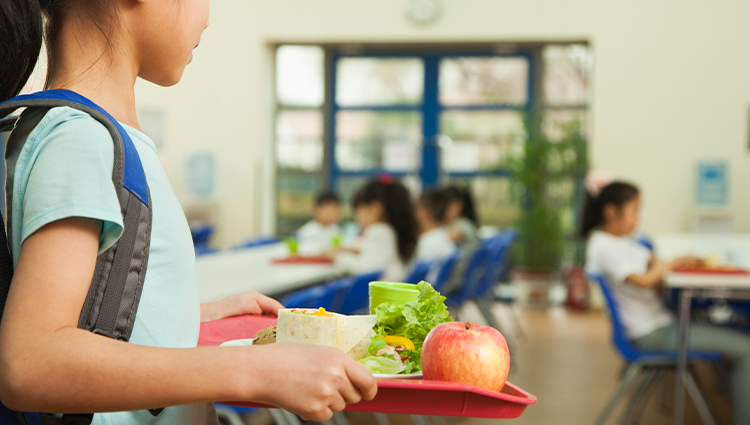As the Coronavirus pandemic shut down the U.S., more than 124,000 public and private schools were forced to shut their doors with little notice. School nutrition directors and administrators know all too well how this impacts the nearly 22 million low income-kids who depend on the U.S. Department of Agriculture’s National School Meal Program, which provides nutritionally balanced, low-cost or no-cost meals to children each school day.
The Lifeline of School Meals Has Been Interrupted – but Not Stopped
With one out of six American children considered food-insecure, school breakfast and school lunch are a lifeline – one for which school closings, even if they are necessary for public health, can have dire consequences. School nutrition directors and administrators have had to scramble to figure out how to get necessary food to kids without endangering themselves or the students and families they are serving. For thousands of schools, this meant transitioning from traditional school food service to curbside or meal delivery service.
Practical Challenges of Feeding Our Students
The mindset of purpose and responsibility for serving children has been the driving force for Aldine Child Nutrition, even as we find ourselves balancing the challenges of health, safety and a necessity for food.
Since the launch of meal service in mid-March, our staff have been 100% committed. They have had to draw on their food inventory from memory, decipher quickly evolving reimbursement regulations, and plan for an entirely new meal service within just a few days.
It takes an army of staff to prepare, assemble and bag three breakfasts and three lunches per student, including hot menu items, twice each week. Next, they transport meal bags to each distribution site, which may be a short or long trip. Finally, actual distribution takes place outdoors with strategic counting and claiming of each meal, requiring students to be present or to submit documentation of school attendance. Through all of this, there is the absolute necessity of protective masks and gloves, social distancing and continuously sanitizing surfaces.
There are continued concerns about keeping food safe with rising outdoor temperatures, worries about staff falling ill, high demands for meals due to increasing unemployment, and dwindling food, sanitation and serving supplies.
Even through the challenges and unknown end of COVID-19 meal service, our Child Nutrition staff perform with courage, commitment and compassion.
Future Unknowns and How You Can Help
In the long term, when school resumes, it may not do so in a normal manner. Child Nutrition programs are likely to be asked to provide meals in unconventional methods such as in the classroom, on alternate days or at staggered times. The impact of COVID-19 will be present for a long time with many new and unknown challenges and requirements.
School personnel have been featured widely in magazines and rightly celebrated as heroes. However, there are still numerous challenges ahead. This pandemic has exposed cracks and flaws in navigating through regulations, product availability and lack of budget for essential school meal service personnel. However, you can help. Individuals and businesses can donate money to GENYOUth For School’s Sake Campaign, which will directly help schools across the country continue to feed students in a safe and sustainable manner.




